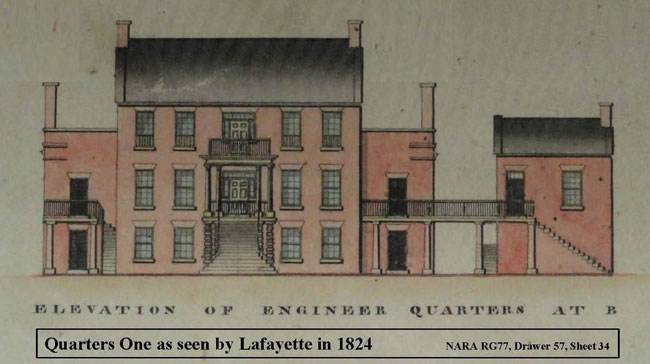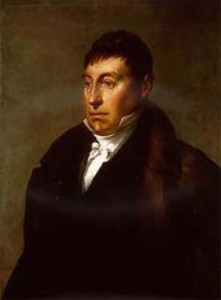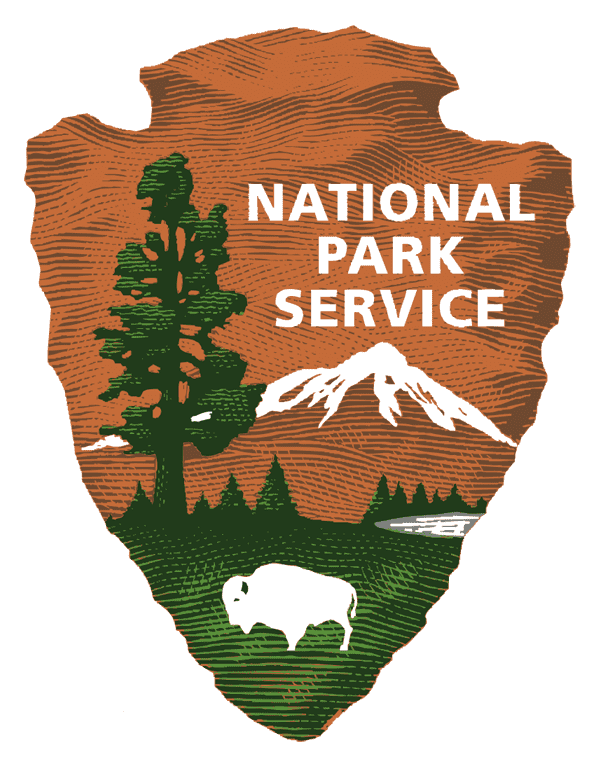
By Robert Kelly, Casemate Museum Historian
In 1824, President James Monroe, the last of the founding-father presidents, invited Marquis de Lafayette, the last surviving general of the Revolutionary War, to visit the United States, as an official “Guest of the Nation.” Forty-eight years had passed since the signing of the Declaration of Independence and 43 since the British surrender at Yorktown. As the generation of Revolutionary War veterans passed away, fewer and fewer Americans remembered the bloody struggle for liberty and freedom from England. President Monroe recognized that it was a crucial time in the country’s history. He felt it was important for the younger generation to recognize that freedom and democracy had come at a great cost. The President looked to Lafayette, the hero of both France and America, to return and remind Americans of the sacrifices and heroism of the time.
In the summer of 1777, wealthy French aristocrat Marquis de Lafayette, captivated with the ongoing American struggle for independence, used his personal wealth to purchase a ship and sail to America. Volunteering in the Continental Army, the 19-year-old Lafayette soon earned the command of a division and the high respect of his American soldiers. He was wounded at the Battle of Brandywine in 1777, accompanied General Washington at Valley Forge that winter, escaped capture by Lord Cornwallis at Richmond and was with Washington during the decisive Yorktown campaign in 1781. By the age of 25, Lafayette had earned the reputation as a fearless leader and had become General Washington’s top-ranking officer and devoted friend. Following the War, Lafayette returned to France and Americans recognized the significant role that he had played in securing victory against England. Twentieth-century Lafayette biographer Martha Foote Crow capsulated his career succinctly as “the boy Cornwallis could not catch, the man Napoleon could not intimidate.”
Lafayette’s return to America in 1824 lasted 13 months during which time he visited all 24 states, traveled an estimated 5,000 miles and was hosted by the cities of New York, Boston, Philadelphia, Baltimore and Washington. He was hosted by former Presidents John Adams, Thomas Jefferson, James Madison and James Monroe and two future presidents, John Quincy Adams and Andrew Jackson. He was accompanied by his only son, 45-year-old George Washington Lafayette, his secretary Auguste Levasseur and his personal servant. Revered with immense admiration, Lafayette was given a hero’s welcome everywhere he visited. Lavish parties, cotillions, concerts, parades and speeches were a regular occurrence that celebrated his heroism, fame and legacy. On one such occasion when addressing and welcoming Lafayette in the New York Senate Chamber on September 13, 1824, Mayor of Albany Ambrose Spencer proclaimed, “Franklin, the wisest man of the age, pronounced you the most distinguished he ever knew, Washington, the illustrious hero of the new world, honored you with friendship the most sincere and with confidence the most unlimited…”
Lafayette spent eight days in the Tidewater of Virginia, October 18-25, 1824, one of his longest stays in a single geographical area. After visiting Yorktown, Jamestown, Williamsburg and Norfolk, General Lafayette arrived at Fort Monroe on Sunday October 24, 1824. The Norfolk and Portsmouth Herald {October 27, 1824}, which covered his visit extensively stated, “…the general left here {Norfolk} on Sunday afternoon for a visit to Fortress Monroe where he was received with highest military honors.” The General was escorted throughout Fort Monroe by Colonel Abraham  Eustis, the commanding officer. Later in the evening, Colonel Eustis received Lafayette at Quarters No. 1 where he partook of a “handsome cotillion party and spent the evening.” The next morning he received the troops and officers of Fort Monroe and after taking breakfast with Colonel Eustis visited the adjacent fortifications of Castle Calhoun (Fort Wool). Captain Rufus Baker, an army engineer at Fort Monroe, described Lafayette’s visit in a letter to his mother penned just a few days after his visit:
Eustis, the commanding officer. Later in the evening, Colonel Eustis received Lafayette at Quarters No. 1 where he partook of a “handsome cotillion party and spent the evening.” The next morning he received the troops and officers of Fort Monroe and after taking breakfast with Colonel Eustis visited the adjacent fortifications of Castle Calhoun (Fort Wool). Captain Rufus Baker, an army engineer at Fort Monroe, described Lafayette’s visit in a letter to his mother penned just a few days after his visit:
“Lafayette visited our post and stayed all night with us – receiving our Regiments and eat and drank, and then eat and drank again_In fact Mother, He eats like our doberman and always has a keen appetite for duplicate dinners suppers and breakfasts and I am told the he conquers York River Oysters that fill a tumbler.” Garrisoned only 15 months prior to Lafayette’s visit, Fort Monroe was still under construction. According to 1824 U.S. Army Engineer drawings, the water battery on the east side of the Fort had been completed and the majority of the stone walls erected. However, the moat remained incomplete, the brick-faced casemates unfinished, only a handful of permanent buildings completed and plans for a hospital only recently finalized. The parade ground had been leveled and graded only two weeks prior on October 6, 1824, in preparation for his visit.
Lafayette would have had more than a passing interest in the engineering of the fortifications at Fort Monroe and Castle Calhoun. President Madison had appointed French-born engineer Simon Bernard to design Fort Monroe and Castle Calhoun on the personal recommendation of Lafayette. In a letter to President Madison on November 11, 1815, Lafayette concluded, “I am so sensible of the value of Genl. Bernard that I will feel highly happy to hear his proposal has obtained your approbation.” One year later on November 16, 1816, Bernard was appointed assistant engineer with the rank and pay of brigadier general of United States Army engineers. Bernard would eventually design some of the United States’ most important and impressive fortifications including Forts Monroe, Adams, Hamilton, Macon and Morgan. Bernard’s service to America and his fortifications are a standing testament to Lafayette’s sphere of influence in the defense and preservation of American freedom.
Lafayette’s triumphant return to America concluded the following year when he departed Washington for France aboard the newly commissioned frigate Brandywine on September 7, 1825. When Lafayette died in France on May 20, 1834, President Andrew Jackson proclaimed that, “the same honors be rendered on this occasion at the different military and naval stations as were observed upon the decease of Washington…” Today, on the main floor of Quarters No. 1 adjacent to the “Lincoln Bedroom” is the “Lafayette Room” where Lafayette presumably spent the Sunday night of October 24, 1824. It now serves as the office of the Executive Director of the Fort Monroe Authority and will eventually transfer to the Fort Monroe National Monument to be managed by the National Park Service.
Marquis de Lafayette personified courage, honor and victory to early American’s but most importantly, he represented freedom. Today, Fort Monroe epitomizes all aspects of American history including the pursuit for freedom and the arc of slavery for African Americans. As the Casemate Museum transitions from an army museum to the responsibility of the Fort Monroe Authority, it is important to keep the Fort’s legacy alive and to continue interpreting its rich history. We are at a juncture where we look to figures such as Lafayette for inspiration in the hope that we may continue our forefathers’ dream of opportunity and the preservation of freedom for all. October 24, 2014, marks the 190th anniversary of Lafayette’s visit to Fort Monroe. This special occasion allows us to stop and consider where history has taken us, where it may lead us and how we are the ultimate stewards of Fort Monroe and the Casemate Museum for future generations.





